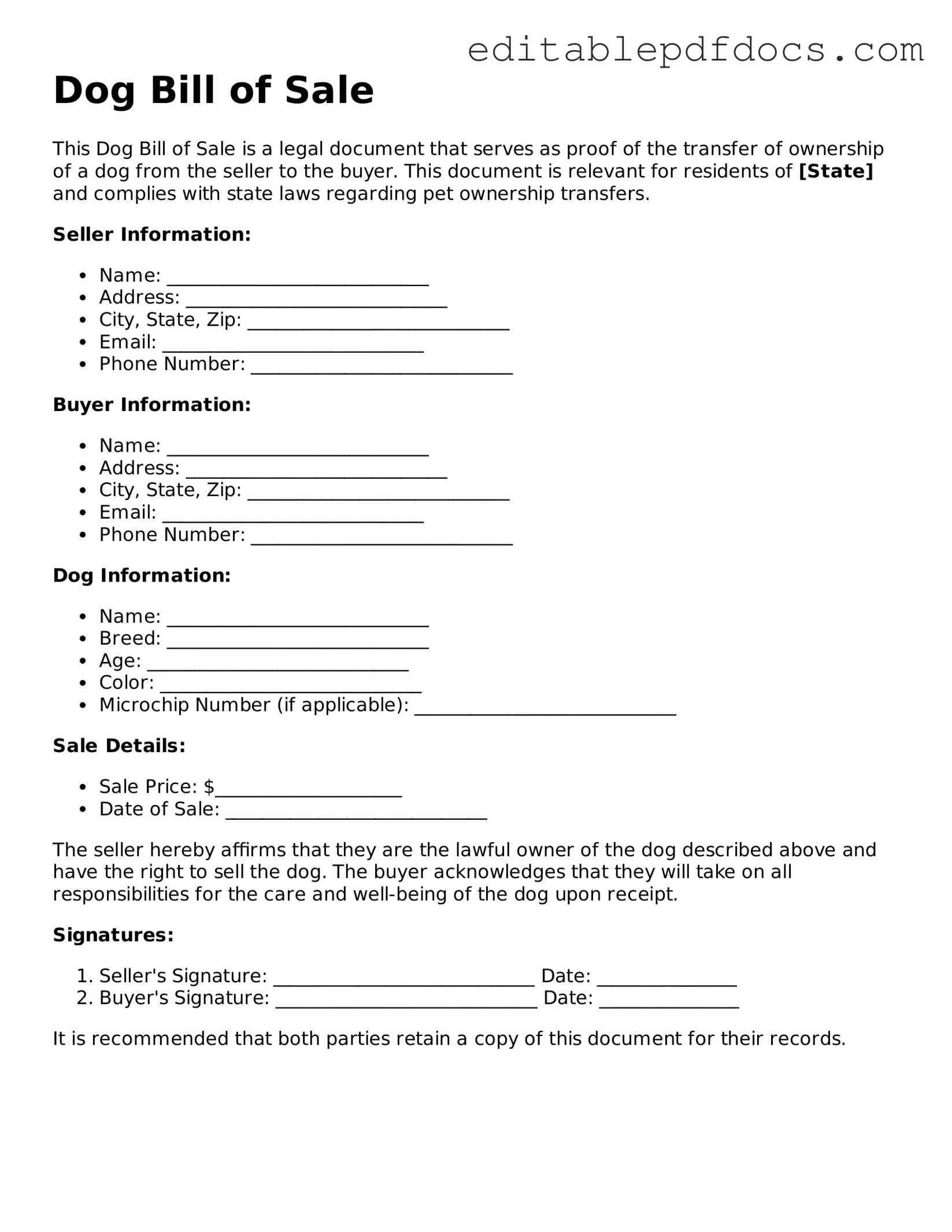The Dog Bill of Sale form serves as an essential document for anyone involved in the buying or selling of a dog. This form not only formalizes the transaction but also protects the interests of both the buyer and the seller. It typically includes crucial information such as the breed, age, and health status of the dog, ensuring that the buyer is fully informed about the pet they are acquiring. Additionally, the form often outlines the purchase price and any terms regarding warranties or guarantees, which can be vital in case of future disputes. By documenting the transfer of ownership, the Dog Bill of Sale helps establish clear legal rights and responsibilities, making it easier for both parties to navigate any potential issues that may arise after the sale. Furthermore, it can serve as proof of ownership, which is particularly important for registration or if the dog is ever lost or stolen. Overall, this form plays a significant role in promoting responsible pet ownership and fostering transparency in the pet market.
